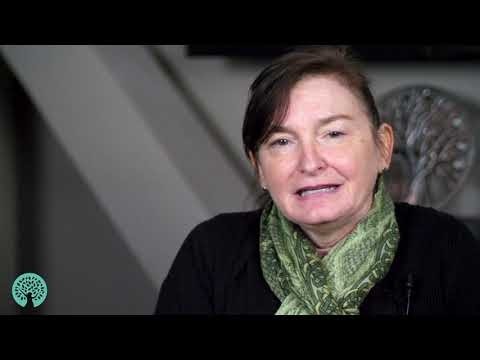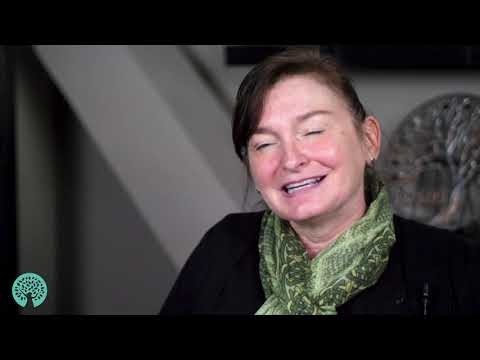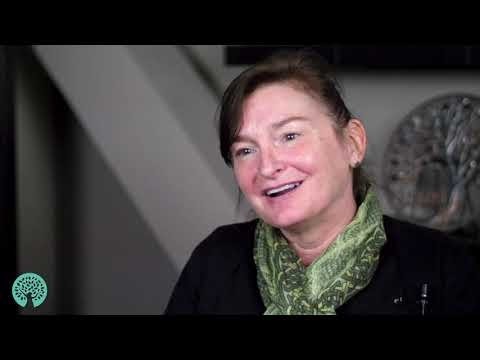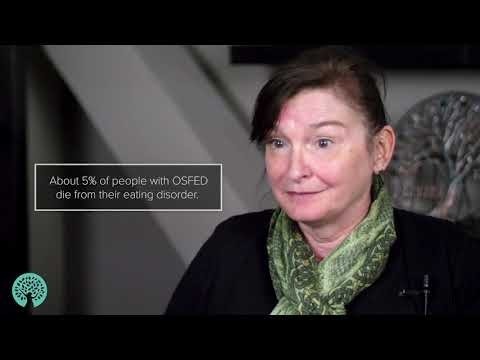
What is OSFED?
OSFED is a clinical category used to describe a variety of disordered eating behaviors (maladaptive thoughts and behaviors related to food, eating and body image) that do not meet all the diagnostic criteria for a specific eating disorder, like anorexia nervosa or bulimia nervosa.
OSFED examples
- Atypical anorexia nervosa
- Bulimia nervosa (low frequency and/or limited duration)
- Binge eating disorder (low frequency and/or limited duration)
- Night eating syndrome
- Purging disorder

OSFED causes
Other specified feeding and eating disorders (OSFED) do not have one single cause. Eating disorders typically result from a combination of biological, psychological and sociocultural factors as we explain below.

Biological causes
The following biological factors can either raise or lower one's risk of developing an eating disorder:
- Genetics
- A family history of eating disorders
- Temperament
- The neurobiology that influences hunger and satiety cues
Psychological causes
A number of life experiences may influence whether an individual develops an eating disorder during their lifetime:
- Traumatic experiences
- Low self-esteem
- Depression, anxiety, stress
- A perceived loss of control over one's life
- Feelings of inadequacy or loneliness
- Challenges with developmental milestones
- Difficulties with changes and transitions
Sociocultural causes
Society norms and the media may contribute to the development of eating disorders for some individuals in a number of ways:
- Pervasive messaging that thin (or muscular) bodies are the ideal
- Normalizing/encouraging diet culture (including trends like elimination diets, juice cleanses, veganism, etc.)
- Widespread encouragement of weight loss to support a “healthy” lifestyle
OSFED symptoms
OSFED symptoms vary. Each person with disordered eating will have their own unique and distinct characteristics and symptoms. Take a look at some of the most common OSFED symptoms below.

- Restricting calories and/or self-starvation
- Binge eating
- Purging through means including self-induced vomiting, laxative abuse, diuretic abuse
- Distorted body image (body dysmorphic disorder)
- Strange rituals associated with food and/or eating
- Obsession with food cleanliness or purity (orthorexia)
- Intense shame or anxiety related to food, eating or body image
- Excessive exercise
- Manipulation of insulin for weight loss (diabulimia)
- Loss-of-control eating behaviors like night eating/nocturnal eating, eating past satiety, impulsive eating
- Other compulsive food behaviors like hiding food, hoarding food and eating food out of the garbage
OSFED can harm your health
The health risks associated with OSFED are numerous and varied, as these conditions can involve any number of maladaptive eating or exercise behaviors. We list the serious health risks associated with OSFED below.

- Tooth decay related to purging
- Lanugo hair growth from food restriction
- Cheek and face swelling from purging
- Organ failure
- Osteoporosis
- Muscle loss and weakness
- Fatigue
- Electrolyte and chemical imbalances
- Irregular bowel movements/constipation
- High blood pressure
- High cholesterol levels
- Heart disease
- Type II diabetes mellitus and/or gallbladder disease
Due to a heightened mortality rate associated with eating disorders, eating disorders can be life-threatening. In fact, research has found a mortality rate of 5.2 percent for unspecified eating disorders. Suicide can also be a risk.
OSFED treatment
At Eating Recovery Center, we recognize that each eating disorder is unique, and that eating disorder-related behaviors and thoughts can be serious and life-interrupting even if one does not meet full criteria for anorexia, bulimia or binge eating disorder. Explore OSFED treatment options below.

The Eating Recovery Center approach
When helping individuals with eating disorders, our experienced healthcare professionals emphasize:
- Medical and psychiatric stabilization
- Interruption of maladaptive behaviors
- Therapeutic support (examining what maintains the disordered eating)
- Nutritional counseling and education
- Development of recovery skills
Like all patients with eating disorders, those living with OSFED eating disorders will have an individualized treatment plan that acknowledges their distinctive recovery needs and challenges. No matter what physical, medical or emotional challenges come their way, we offer a full spectrum of care to meet the diverse recovery needs of our patients and families.
Nutrition counseling and education
No matter what your symptoms look like, you deserve to have a peaceful relationship with food and your body. In eating disorder treatment, a personalized nutritional program will be prescribed for you, based on your unique history and experiences. The goal is to help you:
- Develop a healthy relationship with food
- Eat a variety of foods in balance way
- Enjoy food in moderation
OSFED vs. EDNOS
OSFED is a newer term replacing the term “eating disorders not otherwise specified (EDNOS)” in the Diagnostic and Statistical Manual of Mental Disorders (DSM). The term “OSFED” may be less well-known than the names of other eating disorders, like anorexia and bulimia, but OSFED is still quite common and dangerous. At times, OSFED can even be deadly. The health risks associated with OSFED are numerous and varied, stemming from a number of maladaptive eating and exercise behaviors.
Get matched with the exact support you need.
With one conversation, our mental health professionals will help you better understand what you’re going through and what you need.
We will meet you where you are, listen to your story in a therapeutic setting, and match you with the level of support that meets your struggle.
OSFED meaning
OSFED is an acronym for "other specified feeding and eating disorders." Before the acronym "OSFED" was used, these disordered eating patterns were called EDNOS, which stands for "eating disorder not otherwise specified."

OSFED statistics
- OSFED affects up to six percent of the population.
- The mortality rate is estimated to be 5.2 percent for unspecified eating disorders.
- Standardized Mortality Ratio (SMR) for OSFED is 1.92 (SMR is a ratio between the observed number of deaths in an study population and the number of deaths would be expected)1
- Nearly half of OSFED patients have a comorbid mood disorder. 2
- 1 in 10 OSFED patients have a comorbid substance abuse disorder, usually alcohol use. 2
- Body dysmorphic disorder affects men and women almost equally, and approximately one percent of the U.S. population has BDD. (ADAA.org)
1 Arcelus, J., Mitchell, A. J., Wales, J., & Nielsen, S. (2011). Mortality rates in patients with anorexia nervosa and other eating disorders: a meta-analysis of 36 studies. Archives of General Psychiatry, 68(7), 724-731.
2 Ulfvebrand, S., Birgegard, A., Norring, C., Hogdahl, L., & von Hausswolff-Juhlin, Y. (2015). Psychiatric comorbidity in women and men with eating disorders results from a large clinical database. Psychiatry Research, 230(2), 294-299.
OSFED FAQs
What are examples of OSFED?
Examples of Other Specified Feed and Eating Disorders (OSFED) include:
- Atypical Anorexia Nervosa
- Binge Eating Disorder (low frequency/limited duration)
- Bulimia Nervosa (low frequency/limited duration)
- Night Eating Syndrome
- Purging Disorder
Patients struggling with eating disorder behaviors that do not fit into any established eating disorder diagnoses may be diagnosed with OSFED.
Is it OSFED or EDNOS?
Other Specified Feeding and Eating Disorders is a diagnosis that replaces “Eating Disorders Not Otherwise Specified (EDNOS)” in the Diagnostic and Statistical Manual of Mental Disorders (DSM-5). A common condition, one study found that 5% of 699 adolescent females met diagnostic criteria for OSFED. [1]
[1] Fairweather-Schmidt, A.K., Wake, T.D. (2014). DSM-5 eating disorders and other specified eating and feeding disorders: Is there a meaningful differentiation? International Journal of Eating Disorders; 47(5): 524-533.
How do you diagnose OSFED?
To diagnose Other Specified Feeding and Eating Disorders (OSFED), a trained eating disorder treatment professional reviews a person’s eating disorder thoughts and behaviors (bingeing, purging and restricting) and compares them to the diagnostic criteria to see if the person’s symptoms fit an OSFED diagnosis.
How do you treat OSFED?
Other Specified Feeding and Eating Disorders (OSFED) are treated similar to other eating disorders. Experienced eating disorder treatment professionals help individuals fully recover from OSFED with multiple interventions:
- Medical and psychiatric support
- Nutritional counseling with registered dietitians
- Individual, group and family therapy
- Education and recovery skill development
How common is OSFED?
One study found that 1.18% of females and 0.27% of males had OSFED in the past year, primarily in people aged 20-29. OSFED is also the most common eating disorder experienced by people in the U.S., with 3.82% of females and 1.61% of males having OSFED in their lifetime. [1]
[1] Deloitte Access Economics. The Social and Economic Cost of Eating Disorders in the United States of America: A Report for the Strategic Training Initiative for the Prevention of Eating Disorders and the Academy for Eating Disorders. June 2020. Available at: https://www.hsph.harvard.edu/striped/report-economic-costs-of-eating-disorders/
What are examples of eating disordered behaviors?
Eating disorder behaviors commonly fall into one of the following three categories:
- Bingeing – eating more than what most people would eat in a specific time frame
- Purging – an attempt to eliminate calories consumed through vomiting, laxatives, exercise or other means
- Restricting – reducing food intake, skipping meals, fasting, etc.
What is EDNOS called now?
Eating Disorders Not Otherwise Specified (EDNOS) are now referred to as Other Specified Feeding and Eating Disorders (OSFED). OSFED includes the following eating disorders:
- Atypical Anorexia Nervosa
- Binge Eating Disorder (low frequency/limited duration)
- Bulimia Nervosa (low frequency/limited duration)
- Night Eating Syndrome
- Purging Disorder
Is OSFED dangerous?
OSFED can be deadly. Other Specified Feeding and Eating Disorders (OSFED) are associated with one in three deaths related to eating disorders, higher than for any other eating disorder. One explanation for this high death rate is that OSFED are more common than other eating disorders. [1]
[1] Deloitte Access Economics. The Social and Economic Cost of Eating Disorders in the United States of America: A Report for the Strategic Training Initiative for the Prevention of Eating Disorders and the Academy for Eating Disorders. June 2020. Available at: https://www.hsph.harvard.edu/striped/report-economic-costs-of-eating-disorders/
Hide Last Child Layout Div


